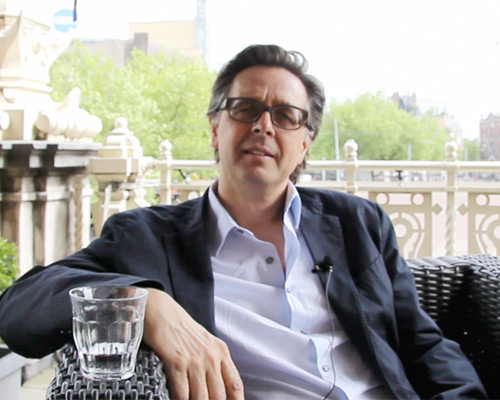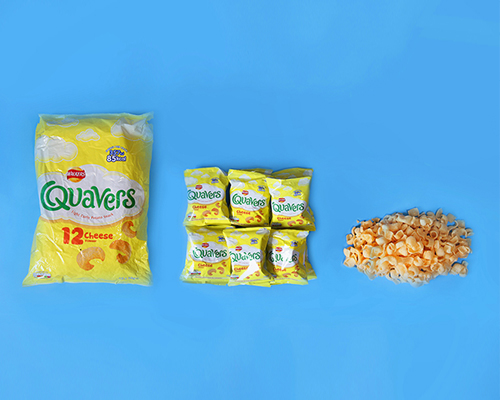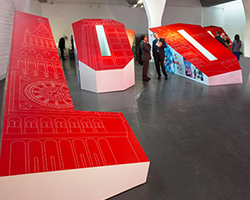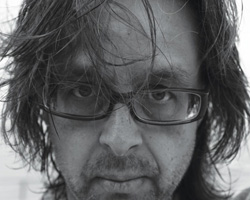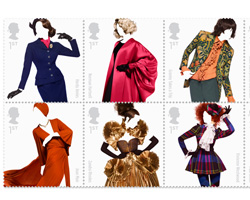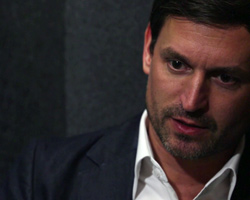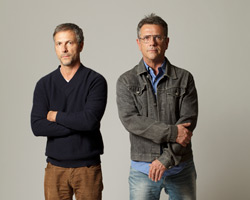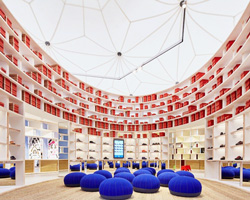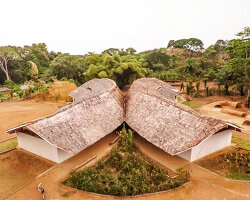interview with michael johnson of johnson banks on the role of graphic design
portrait © designboom
after working as a designer and consultant for such agencies as wolff olins in london, and dentsu in tokyo, michael johnson founded his own studio johnson banks in 1992. the london-based graphics and branding firm has worked with a range of clients from blue chip organisations such as virgin atlantic and think london, cultural institutions including the science museum in london, and in more recent years has taken on a number of not-for-profit clients like the cystic fibrosis trust and disasters emergency committee, assisting these companies in changing the way they promote themselves to the rest of the world. on the occasion of the 2015 ‘WHAT DESIGN CAN DO!’ conference in amsterdam, designboom sat down with the british-born graphic designer and brand consultant to find out what has particularly influenced his work, and what he considers to be his studio’s strongest creative strength.
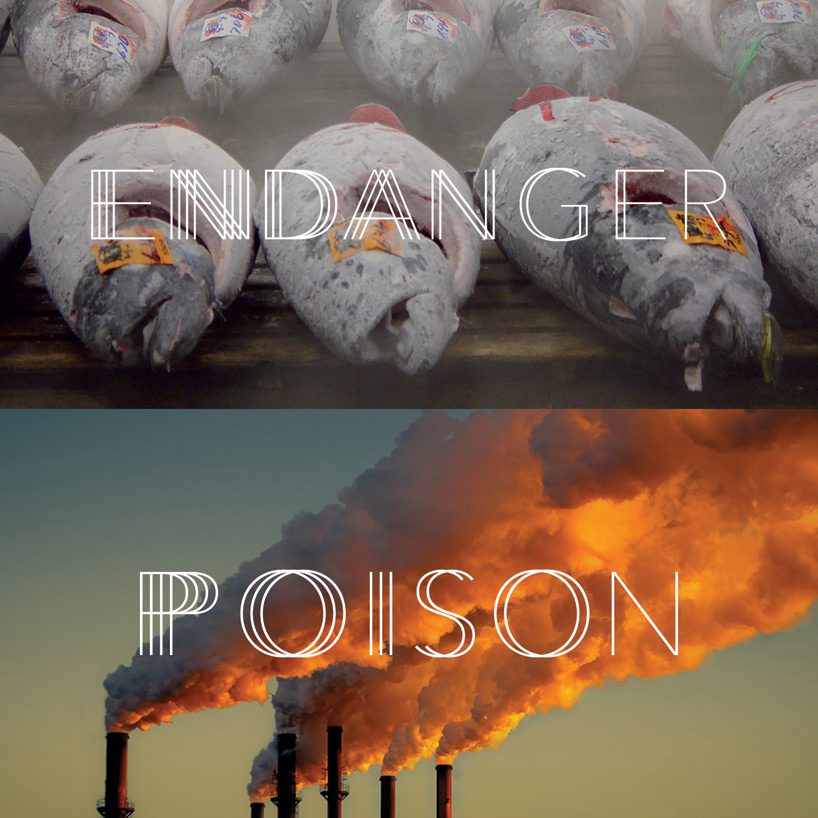
mlinda is an environmental foundation based in paris and active across the world, committed to changing the way we produce and consume
designboom: what originally made you want to go into the field of graphic design?
michael johnson: ok, I think I originally started being interested in the field of graphics and design when I was about 13 or 14 when I started to draft alphabets and numerals in art. I think in retrospect that was the sign I wanted to be a designer, but funny enough my family were a little against it because one of my family members was what we call a commercial artist in the 50s — the name they gave to graphic design before it was called graphic design — and it wasn’t a particularly great profession you know. they actually tried to steer me away from graphic design for quite a while, but I kinda knew really that from, I can say from 14, I was designing typefaces. that’s a pretty clear sign I think, so I had an idea.
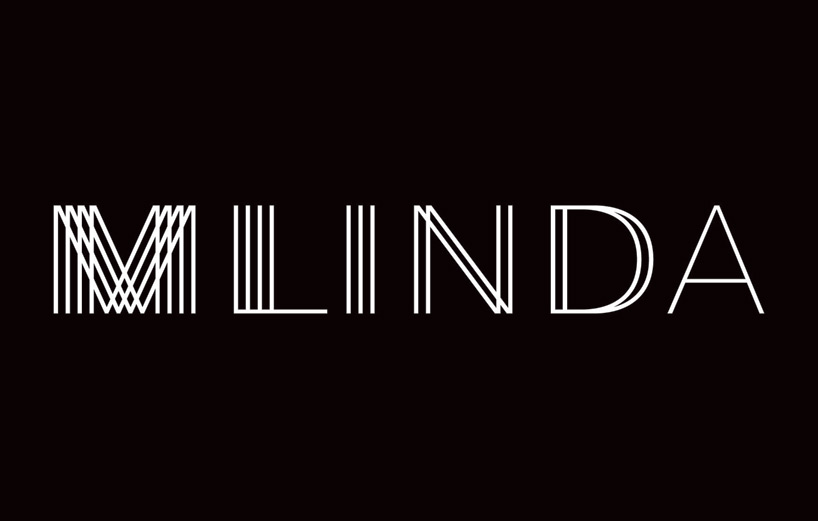
mlinda logo
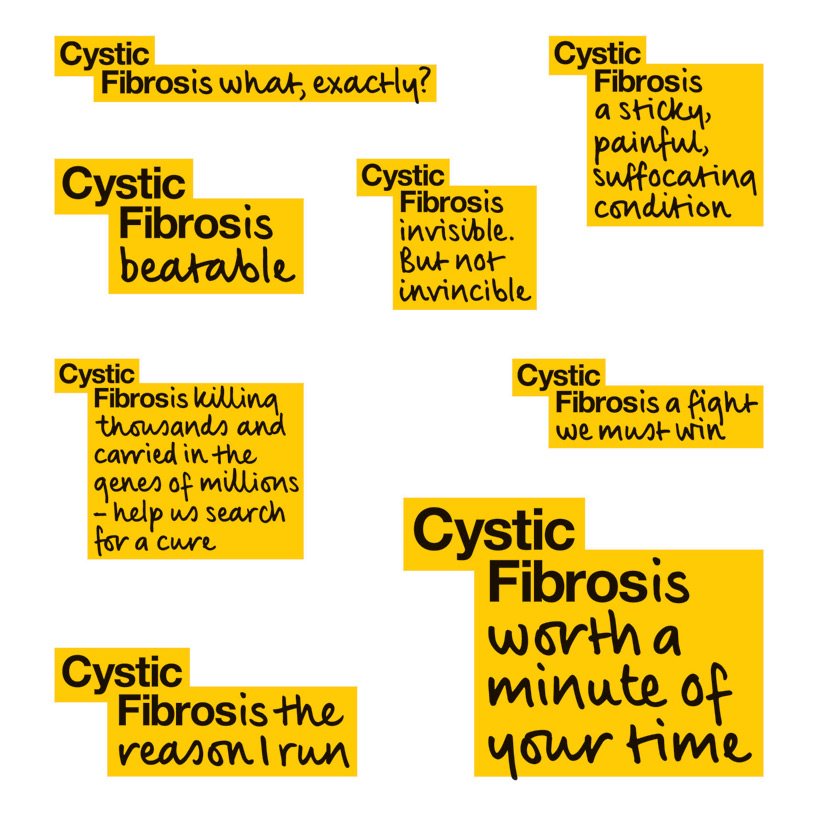
rebrand of the cystic fibrosis trust which activates the ‘is’ in their name
DB: so carrying on with what you just said, what is your view on the fact that art and design are often categorized as two separate things?
MJ: I think that the idea that art and design are separate is kind of a college thing, where they clearly push you one way or the other; and they make you decide whether you’re going to be this or whether you’re going to be that. certainly when I left college, there was a clear distinction, but in the last 10-15 years, at college level there has been much more encouragement for designers to become much wider reaching in the way they think about the work and much more conceptual especially for graphic designers. so that’s been a really useful and encouraging trend I think for designers especially to think broader.
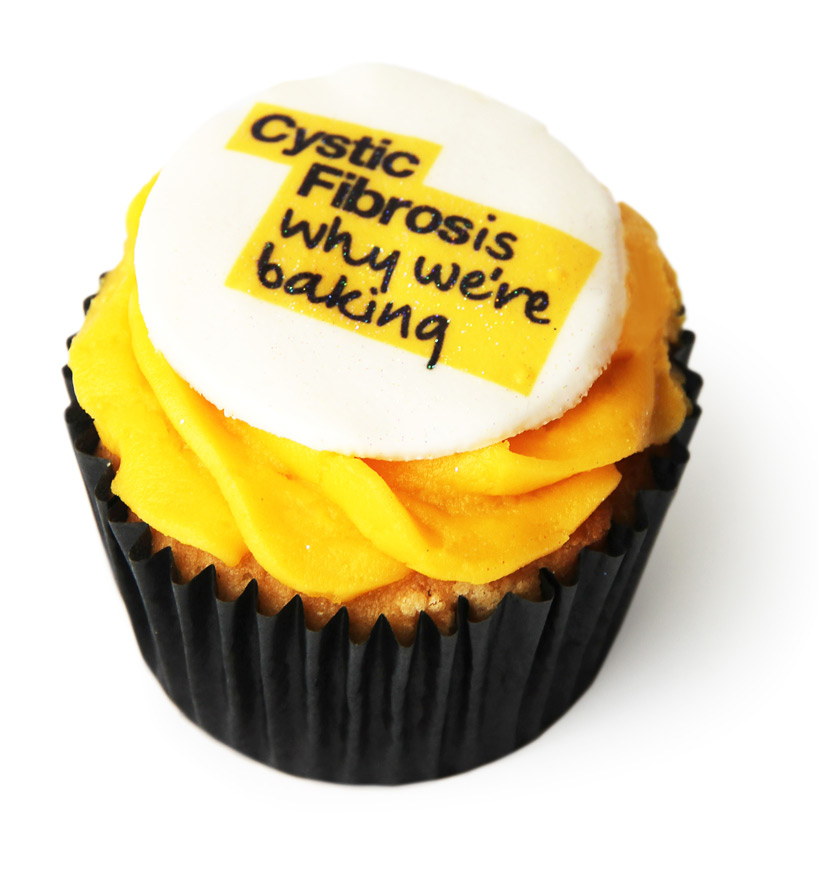
the graphic being carried over to baked goods
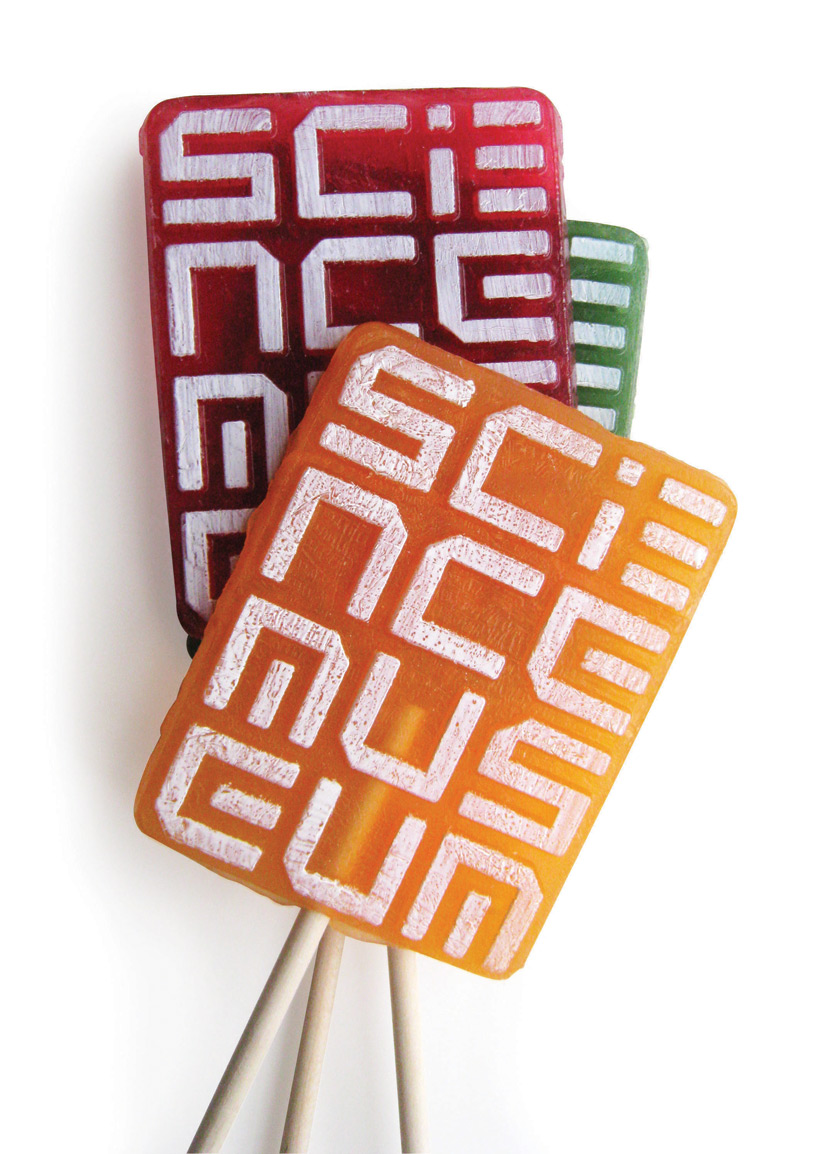
new branding for the world famous science museum in london
DB: is there anyone in particular who you are following the work of? and also reflecting on the past, who has been an influence on your own practice?
MJ: I think from the past… um, I mean the designer I would always come back too is a designer called tibor kalman who ran a company called M&co. in the 80’s and 90’s. I always found his work fantastically inspiring and witty and human and clever, but not funny ‘ha ha’ — just a lovely combination of wits and humor and insight and humanity. now, I mean if I am honest, I am more likely to be inspired by an architect, or an artist, or a painter or sculptor, or a writer. at the moment I seem to take more inspiration from outside graphic designers. that’s not to say I don’t think there is great work being done in graphic design, but I am much more interested in other influences and other areas. so, actually yesterday at ‘WHAT DESIGN CAN DO!’ I was really interested in the work that the architects were doing because that seemed really based in reality, honest and authentic, and I thought that actually chimed better with the work I do now than actually funny enough, some of the other graphic designers. strangely.
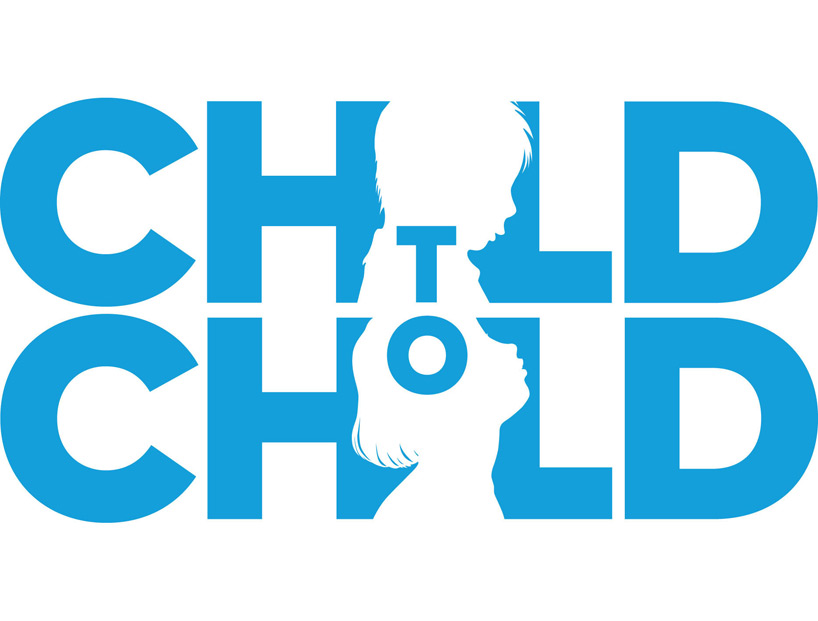
logo for ‘child to child’, a children’s rights and education charity
DB: do you find yourself discussing a lot of your work with other graphic designers?
MJ: sometimes, but because we work in a very broad field of strategy narrative and a really wide area of graphic design, we don’t necessarily cross over with the people who are just designers, you know what I mean? sometimes there is a kind of, say at conferences and things like that, there are people who just do great design, but there isn’t… they’re not doing strategic work. they’re doing beautiful bits of brochures or print or posters, and our work is now, it might take two years to do a project. it’s very very wide reaching. and, I don’t, in some cases I’m not sure how much common ground we have with, if you like, ‘normal graphic designers’ anymore because we are doing these massive projects around the world that might take us two years to do.
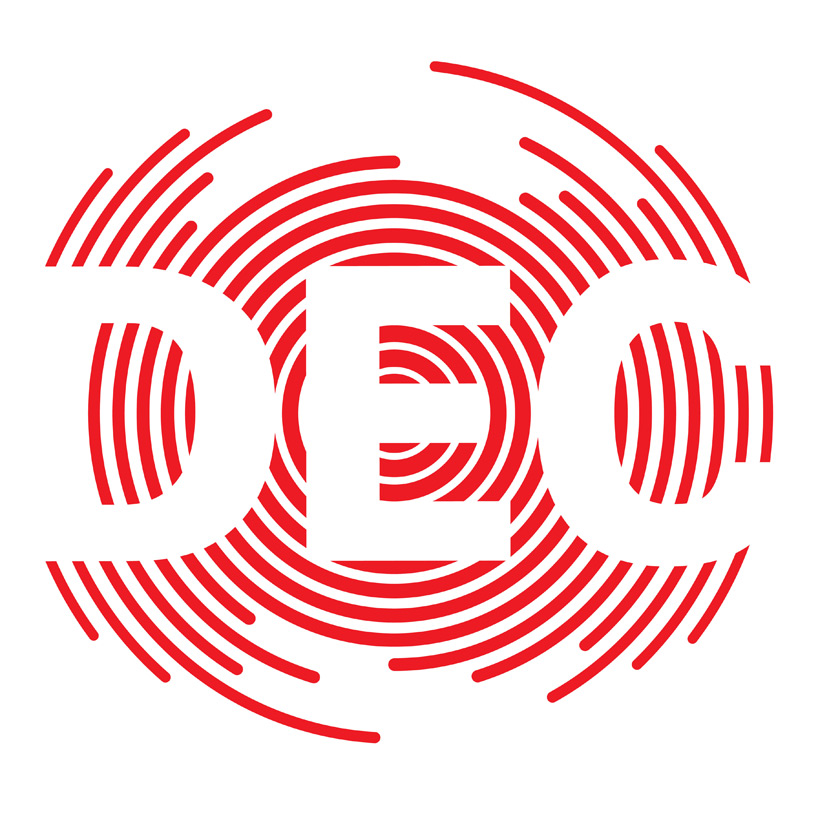
logo for DEC (disasters emergency committee) – a major UK fundraiser in times of global emergencies and disasters, uniting 13 of the biggest aid agencies in the UK. this new scheme has helped them raising hundreds of millions of pounds.
DB: is there something or someone in particular who has changed your view of what graphic design is?
MJ: well, I think what we have been trying to do over the past ten years really is stop being graphic designers really, and start being proper communicators. even if that means we need to do it with words and pictures, or rearrange the way an organization works. A: we started the work for not for profits and NGOs and cultural organizations; and B: more recently I have started to really learn from kind of social enterprises and innovators and business really; and we have trying to work much more with them. so, we kind of have more in common with them than we do the design community.
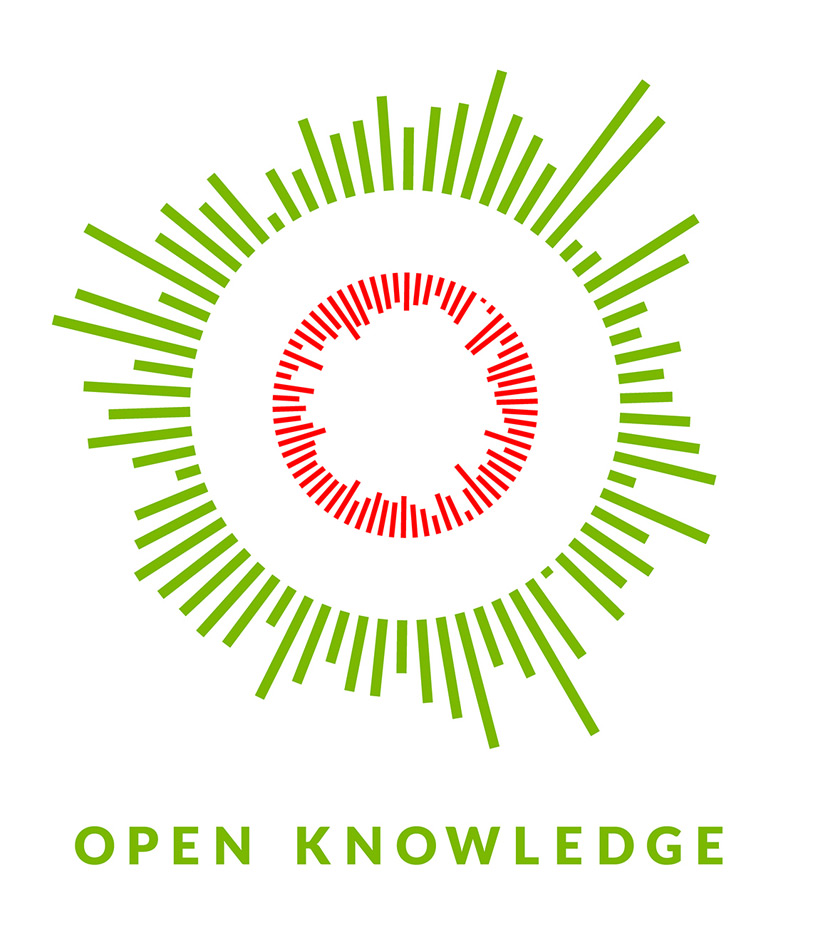
new identity for open knowledge – a global organisation that advocates for the opening up of public data
DB: you have quite a diverse portfolio of clients: I am wondering what your, if there is anyone in particular that you would like to work with?
MJ: yeah, we have just started to work in the really interesting area of sort of ethical investment and that is really intriguing. people are really interested in taking, if you like philanthropic money, and doing something really good with it; and that’s a new area for us, and really fascinating. we are just about start work with the gates foundation in europe. and so, what is really interesting on projects like that is you know you are going to do something which is going to make a massive impact on people’s lives. I spoke yesterday about you know the poster not changing the world, and I kind of believe that. I designed thousands of posters in the 90s and I loved doing everyone of them, but I now… I kind of have changed my mind. I kind of want to raise tens of millions, I want to raise hundreds of millions and I want to physically change peoples lives with what we do. traditionally graphic design couldn’t do that. graphic design was limited and people didn’t see what graphic design could really do… so, we’re trying to broaden the toolkit if you like, and broaden the way that we work and really show people, and hopefully I that showed some people yesterday, that we can really change the way we think of what we do.
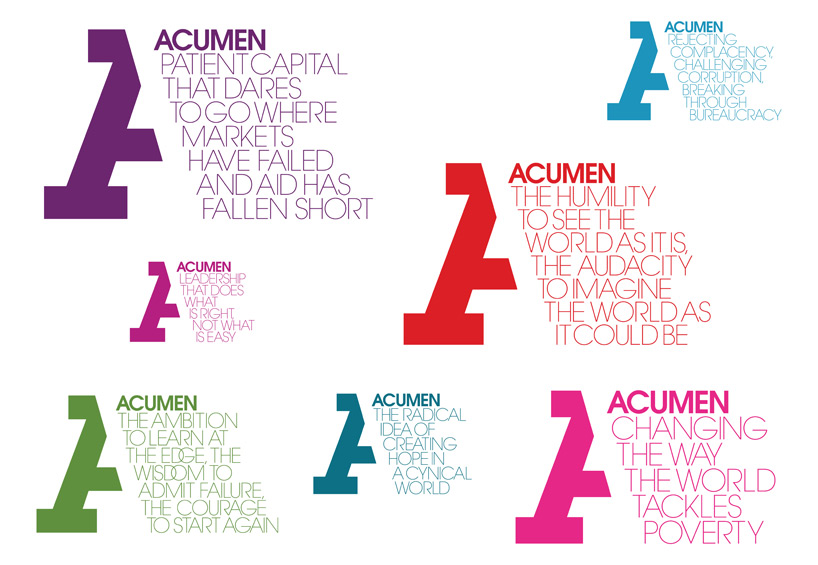
a series of logos designed as part of a scheme for acumen, the world-famous impact investor. they are derived from a manifesto co-authored by johnson banks and acumen.
DB: so do you think the role of the designer, or even the architect, is to satisfy the public?
MJ: the public? well, I mean now I am really more concerned with what change we can get and now it depends which public you mean really; because if you think, it may not be clear from what we do yet, but we now think of our work as having many many different audiences. so we’re doing a project at the moment with a big university, and it doesn’t only involve the people who go to the university, but their parents, and the academics, and the colleges, and the departments, the people who are from the departments, the people who might give philanthropic money to fund the department or a building or the people in government who might help… so you end up with this incredibly wide range of audiences. what we have to do with our work is try to find a way for that work to work for each of those different audiences. I mean, it is very very complicated in a way. and so, actually if you were say a graphic designer for nike, life would be a lot easier. you would just have to think of a nice way to reach your target audience that is over there — they’re 19 and they love your sneakers. but, we stopped doing that ages ago because we now have to worry about this massive range of audiences. sometimes you might need a positive message or a negative message or even a neutral message; and you might also need a volume control. so you have to be very quiet in some cases, and in others you have to turn the volume right up. so, we have to find something that will do all of that.
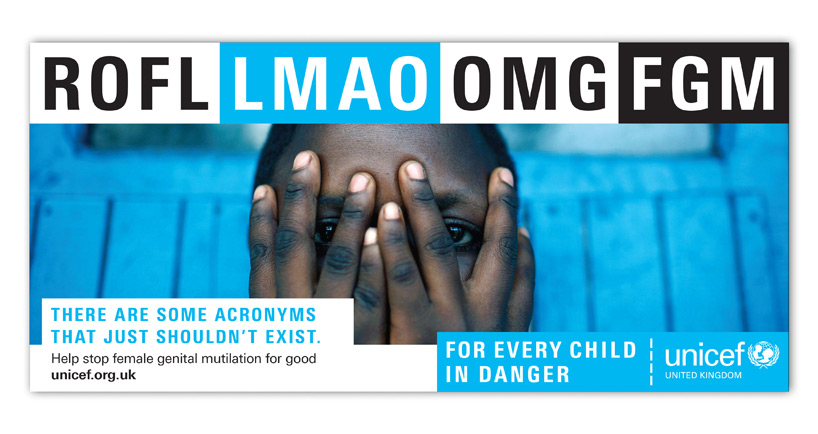
part of a wholesale repositioning of unicef in the UK, allowing the organisation to be much bolder in its comms and already seeing a 25% uplift in impact
DB: carrying on with you mentioning you felt creatively closer to architects, and people outside of your field — is there anything in particular that’s fueling your work and personal creativity at the moment?
MJ: that’s an interesting question. I mean, I think a lot of our work is still based in typography. you know, you’ve gotta… we love words and we (are) often generating names for people. we have to find a way for identities and symbols and logos to work. so, we are huge fans of great typography. we’re always kind of sponging, if you like, new bits of typography. we’re always trying to find a new way to do something in that area, and so whether that be a hand writing font that keeps changing the way that it works — such as our work with cystic fibrosis… or, we are working on a project at the moment which may have a normal way, then a semi-stenciled way, and then a very stenciled way, and then a very, very stenciled way. that is a pretty unusual thought. so, you might get increasingly more stenciled if you like, rather than on or off. we’re always looking for something interesting in that sort of area that will help us express what we are trying to do.
a separate question as well is symbolism. there is a kind of a return to symbolism coming I think, driven mainly by the digital requirements, having to work in 48 pixels. so, I can sort of see a revival in the design of the symbol. we’re not seeing it quite yet, but we will I think we will see, coming over the horizon, people who have a renewed interest in the symbol… because words and names kind of took over with the dot com boom. if you think about it, you spend a lot of money now trying to get a name that no one else has got, and you want to say your name quite big. and so, there’s a lot of, it makes sense, that we shouldn’t be concentrating on the words so much. maybe what’s going to happen next is there is going to be a kind of balancing out of that.
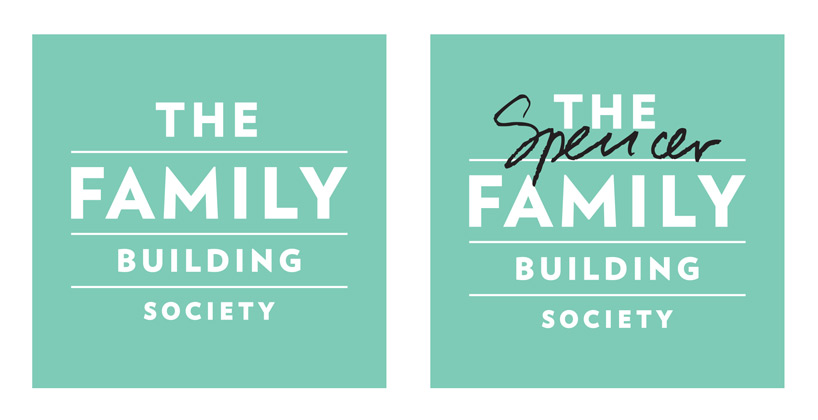
the family building society is a new financial organisation that specifically helps families with their financial needs
DB: is there a particular motto that you live by?
MJ: I think that we’re pretty ethical now, you know? we’re trying so hard to only work with clients whose values align with what we believe in, you know, ethically, correct, morally justifiable, doing good for the world, societal benefit… um, whether it be education cultural, philanthropic, non-governmental. so, interestingly we at the moment don’t align very well with blue-chip organizations because they tend not to share those values. they tend to have values like: ‘we want to make more money and we don’t give a shit about our employees‘ and things like that. I am hopeful that actually blue chip organizations will start to change, that there could be a better way to do this… they could be better people, and then they will, the next generation of blue chip companies, like your googles, will start to see that being better people is a good start rather than not being a good person.
I spent the first half of my design career working for people who at the end of the day weren’t very nice people and I am actually much more interested now in working with people, you know, who are genuine and authentic. you know people talk about this return to authenticity, well I always wanted authentic clients, and now finally we are getting authentic clients. there’s nowhere to hide if you run a big NGO or you want to be an ethical philanthropist. you know, you gotta do the right thing, and that’s what we’re trying to do.
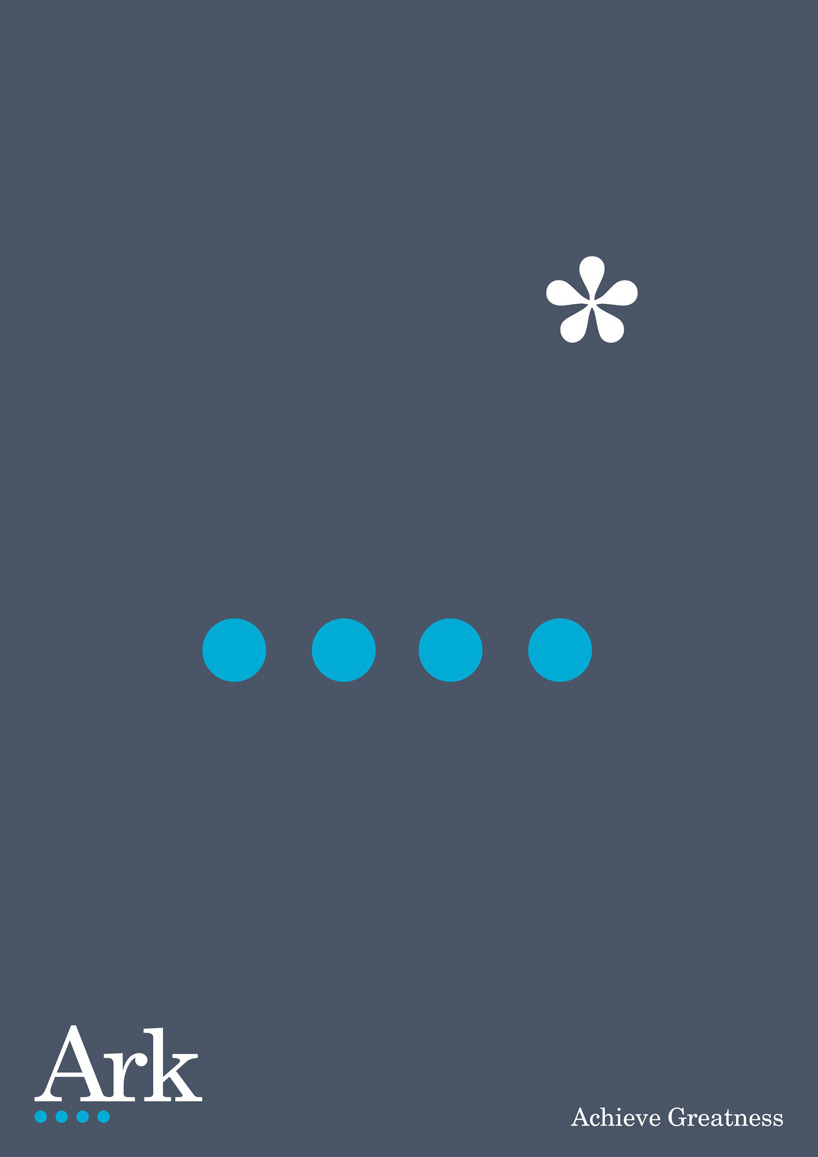
ark achieve poster – part of a new identity for a leading UK schools chain
michael johnson on designing brilliant solutions for the right problems
video © designboom
DB: so I’m curious then, with that, what would you say your studio’s biggest strength is, and how have you honed that over the years?
MJ: I, its always a tricky one to answer, actually, what people say… what other people say about us is that there’s this kind of, I’ve said for years, that’s there’s this combination of words and pictures, which is unusual because we are writing as much as we are designing. and what has happened certainly over the last decade is that, that writing, I suppose that strategic knowledge, has meant we’re doing more and more work with organizations and how they are strategically, which direction they’re going in. so, we might not start designing for a really long time, sometimes as much as a year. so, I think the fact that I think, I am hopeful that we are thought of as a organization that think first, design later if you like. um, because if you start designing too early now in my job, then you get yourself into a mess. you can find a beautiful solution to the wrong problem. the first thing you have to do, which I’ve always believed in, is you have to find which is the right problem to solve, and you can only do that by thinking pretty hard and discussing it with your client; and being a kind of partner with your client. that sounds a bit of a cliche but you otherwise you might come in and do the whole designer thing ‘here I am this is the solution’ and it could be completely the wrong thing to do. I spent my twenties designing brilliant solutions for the wrong problem (chuckles) and ever since really, I have been trying to find the right problem to solve; rather than the wrong problem beautifully illustrated, if you like.

michael johnson was a speaker at the 2015 WHAT DESIGN CAN DO! conference — an international platform about the power of design, promoting design as a catalyst of change and renewal and a way of addressing the societal questions of our time. formed in 2011 by a group of designers from various fields, it aims at showcasing best practices and visions, raising discussions and facilitating collaboration between disciplines, raising awareness among the public for the potential of creativity. at the same time, WHAT DESIGN CAN DO! calls on designers to take responsibility and consider how their work can impact the wider society.
graphic studio interviews (193)
johnson banks (13)
what design can do! 2015 (8)
PRODUCT LIBRARY
a diverse digital database that acts as a valuable guide in gaining insight and information about a product directly from the manufacturer, and serves as a rich reference point in developing a project or scheme.
